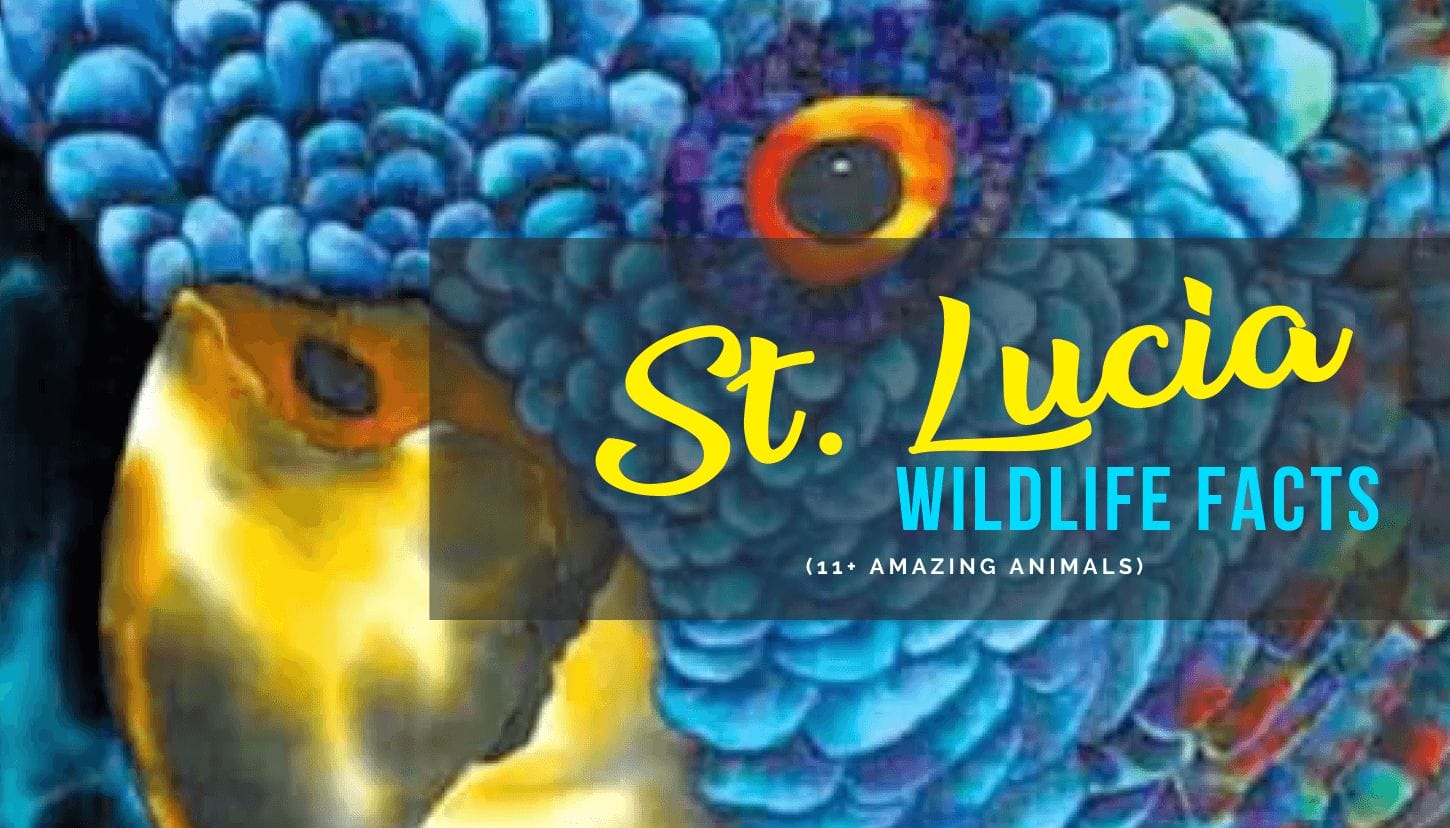Saint Lucia Wildlife Facts (11+ Amazing Animals)
Saint Lucia is blessed with an interesting and exotic array of wildlife. Most Saint Lucia wildlife are indigenous while others have been introduced over the past two millennia by the various groups of people who made their way to the island’s shores.
If you’re looking for fun things to do in St. Lucia, definitely check out a wildlife tour. The 11 most common Saint Lucia wildlife include:
- St. Lucia Parrot
- Iguanas
- Agouti
- Boa Constrictors
- Fer-de-lance
- Manicous
- Mongoose
- Kouwes Snakes
- Worm Snakes
- Saint Lucia Whiptails
- Lizards and Geckos
No matter if you’re doing homework for school or real-world homework, researching St. Lucia wildlife tours…here is a more descriptive listing of our better known resident species of St. Lucia wildlife:
1. St. Lucia Parrot
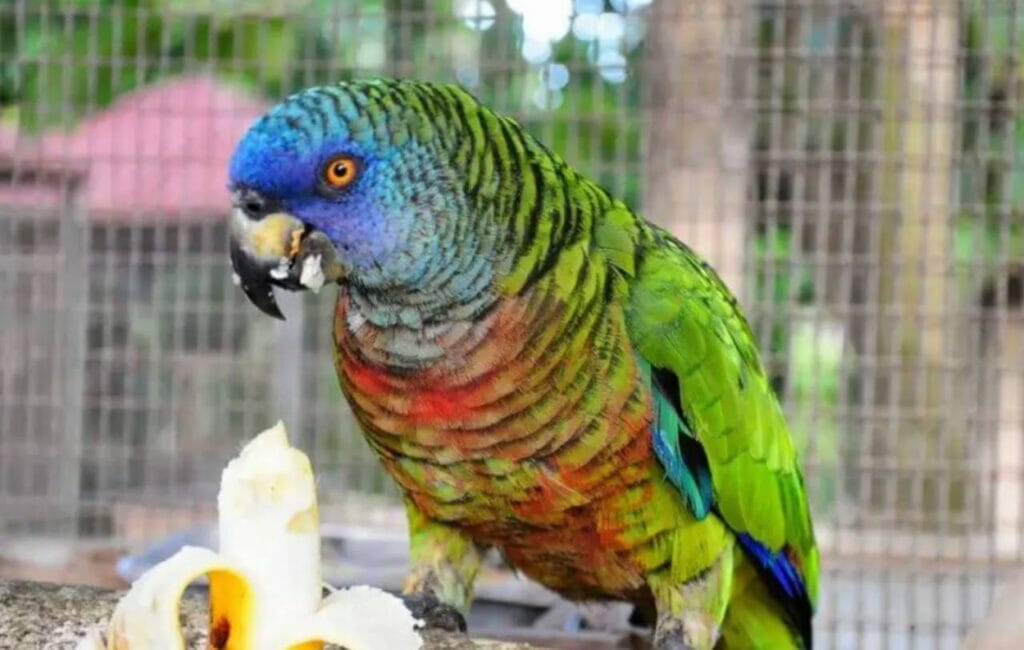
The St. Lucian Parrot (Amazona versicolor), our national bird, is known locally as the Jacquot and is found only in Saint Lucia. This beautiful bird is mainly green in color, with a blue forehead, turquoise and green on the cheeks and red breast.
We are proud to be one of the top 20 birdwatching locations in the world, so check out our full page dedicated to St. Lucia birds.
2. Iguana
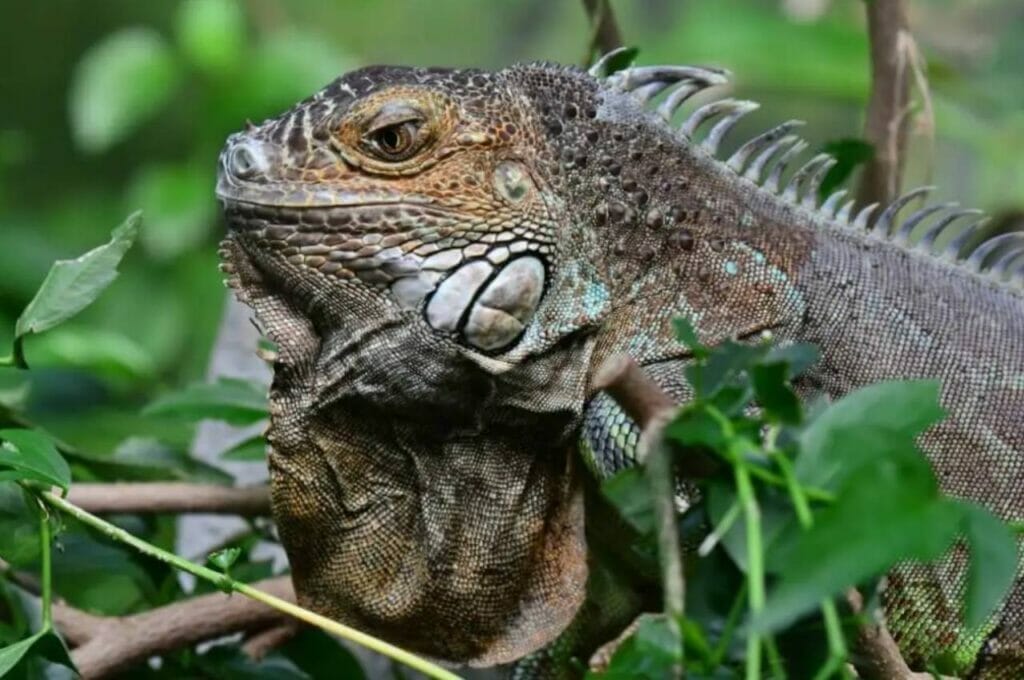
Fun St. Lucia wildlife fact: Saint Lucia used to be called “Iyanola”, which means “Land of the Iguanas”.
The Iguana (Iguana iguana) is the largest lizard found in Saint Lucia. Iguanas, which can grow up to six feet in length, are green with brown or black markings and a crest of spines along the neck.
They are now mostly found along the rugged northeast coast of the island which includes an area which has been designated an iguana reserve.
Iguanas are tree dwellers but are frequently seen on the ground; they also are excellent swimmers. Iguanas feed on leaves, shoots and fruits.
3. Agouti

The Red-rumped Agouti (Dasyprocta antillensis) is a mammal indigenous to Saint Lucia and is a member of the rodent family.
It has long, coarse brown hair and sits erect on long slender legs. The agoutis became scarce and were declared a protected species in 1980.
Not often encountered, agoutis are found in some of the more isolated locations on island.
4. Boa Constrictor

The Boa Constrictor (Constrictor constrictor) or tete-chien, as it is known locally, is a non-poisonous snake that is commonly found in some of the drier scrub areas along the central west and east coasts of the island.
They are harmless to man and are protected by law. Mature snakes can reach a length of 10 feet.
5. Fer-de-lance
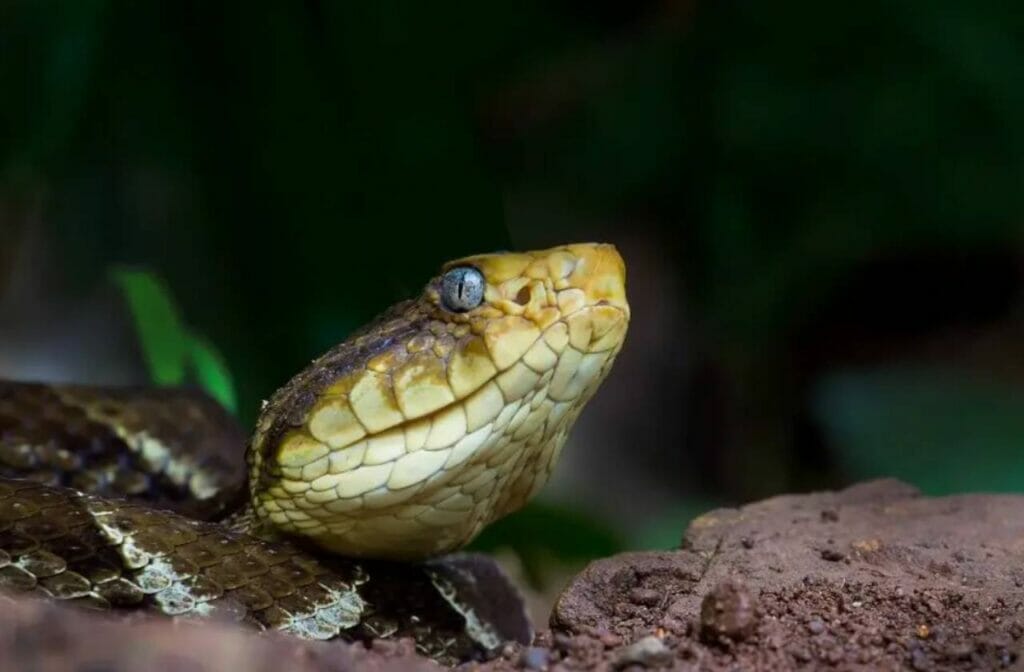
The name fer-de-lance means ‘spearhead’ in French.
This very poisonous snake that can grow to over nine feet in length is known here as the St. Lucia viper (Bothrops caribbaeus) and is now recognized as a separate species.
It is the most dangerous snake found in the Caribbean and Central and South America and causes more human deaths than any other reptile in the Americas.
In Saint Lucia the fer-de-lance is found only within a few drier areas along the central east and west coasts; as these areas are not highly populated bites from this snake are very rare.
6. Manicou

Called a manicou in Saint Lucia, this opossum is relatively common over much of the island.
Skinnier than its North American cousin with a long tail, this marsupial is often seen foraging in the forests and rural communities.
7. Mongoose

The mongoose was originally introduced from India to control snake and rodent populations.
Quick and agile, the mongoose will take on animals much larger than itself. The mongoose is commonly found in drier forests or scrubland areas but also can be seen in the interior rain forests.
These fierce hunters prey upon snakes, rodents, birds and even small domesticated animals.
8. Kouwes Snake
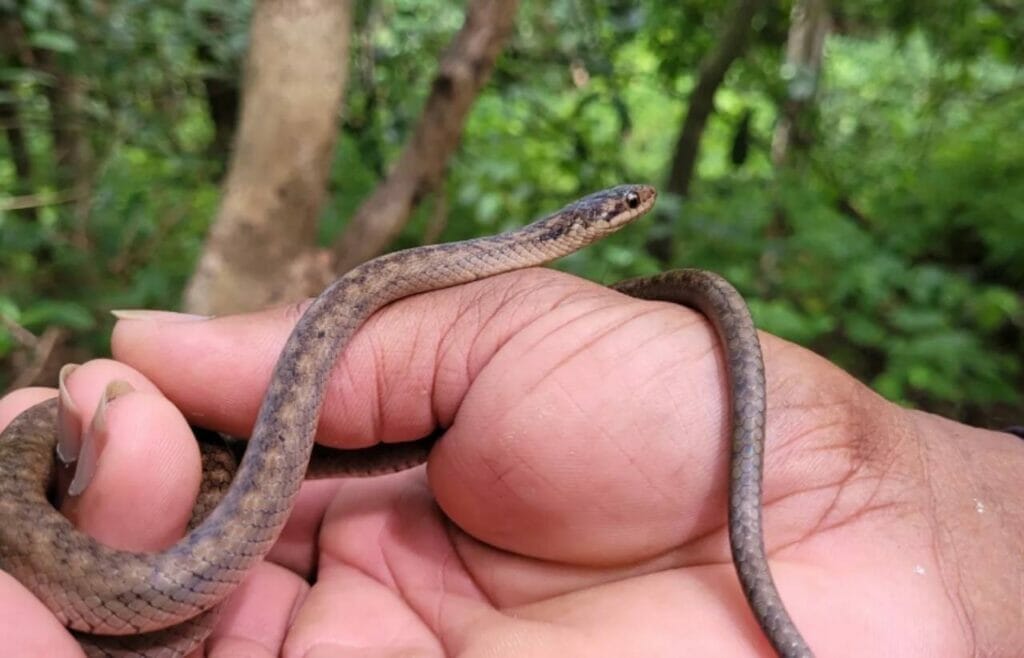
Also known as the St. Lucia Racer (Erythrolamprus ornatus), it is the rarest snake in the world as it is only found on Saint Lucia’s Maria Islands, its last refuge on the planet.
Growing to a length of three feet, this non-poisonous and harmless snake is olive-brown in color with a black zig-zag pattern down the back. It feeds on lizards, frogs and small birds.
9. Worm Snake

The worm snake (Leptotyphlops bilineatus) is recognized as the world’s smallest snake.
Measuring only six inches long and one-eighth inch across, it’s brown with two dark yellow lines running down the back.
It spends most of its life underground and emerges only when the ground is saturated by rain. Its eyes are small and do not form images but are sensitive to changes in light intensity.
The worm snake’s food consists mainly of soil insects such as ants and termites locating its food by smell.
10. Saint Lucia Whiptail
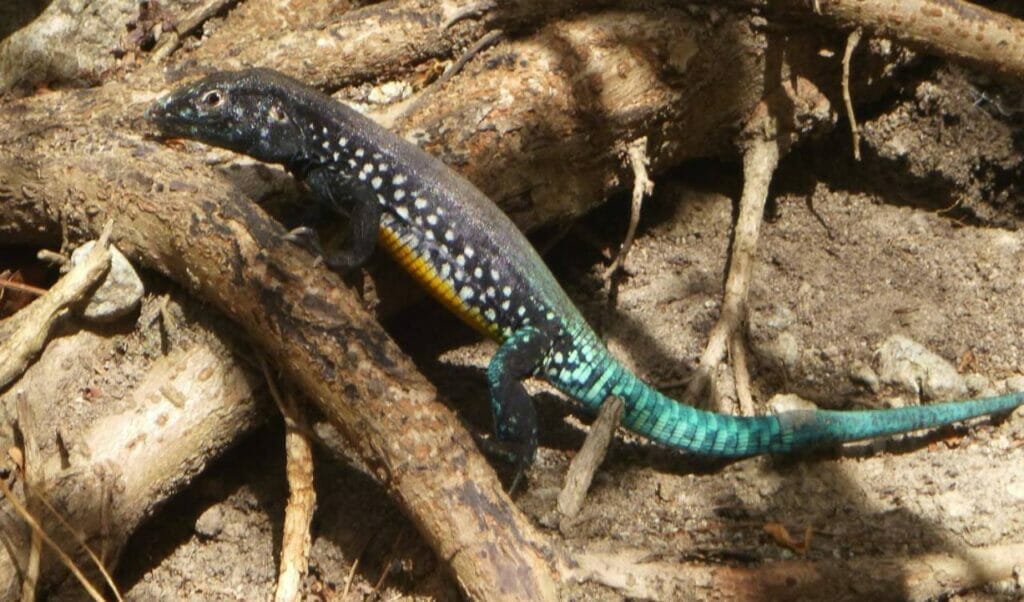
Also known as the Zandoli terre (Cnemidophorus vanzo), the whiptail was unknown to science before 1958 when it was discovered on Saint Lucia’s Maria Islands in the south of the island off the coast of Vieux Fort, the only place in the world it has been seen.
Considered one of the world’s rarest lizards it is also one of the most beautiful.
Adult males are a dark grey brown with a pattern of charcoal grey dots and fine lines running from the neck to the base of the tail. Its belly is bright yellow and its tail bright blue, the colors of the Saint Lucian flag.
A fully grown adult male measures 14 inches in length. Females are smaller reaching 10 inches and are paler and browner than males with a pattern of stripes and dots running laterally from the neck to the base of the tail. Some females have a bright rust-red belly.
Their diet consists mainly of insects which they catch among the leaf litter and dig from the soil.
11. Lizards & Geckos
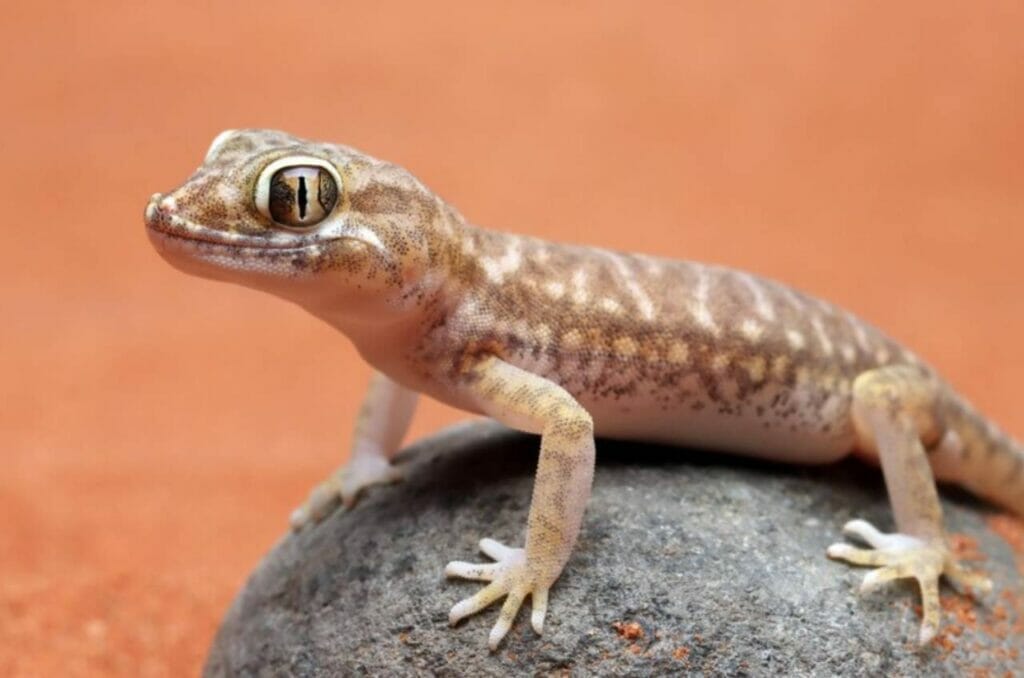
Several varieties of tree and ground lizards and geckos are very commonly found in Saint Lucia.
In many open-style homes and Sandals St Lucia resort accommodations they are often seen within the rooms which most find very beneficial as they eat mosquitoes and other insects. All of these relatively small creatures are quite harmless.
Among reptiles, geckos are unique in being very vocal adding to the tropical jungle sounds heard at night along with crickets and tree frogs; their calls can be heard in the form of bird-like chirps or a rapid clicking sound.

